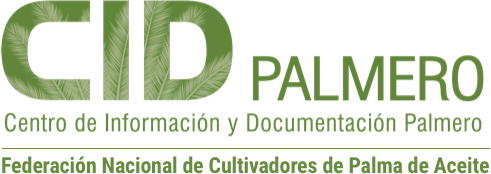Elevating the National oil palm productivity : General perspectives.

Author
Seminar on elevating National Oil Palm Productivity and Recent Progress in the Management of Peat and Ganoderma
May 5-6, 2002 :
Bangi, Selangor, Malaysia :
40260.
Ariffin, Darus
40396.
Chan, Kook Weng
41035.
Jalani, B. Sukaimi
38733.
Rajanaidu, N.
39504.
Yusof, Basiron
41008.
Estadisticas
Abstract
The expansion of oil palm plantings has been phenomenal: from 60,000 ha in 1960 to 3.50 million ha in 2001 and will be expected to reach 5.10 million ha in 2020. The increase in palm oil production has accordingly reflected the pattern of the expansion of oil palm plantings has been phenomenal: from 60,000 ha in 1960 to 3.50 million ha in 2001 planted area, i.e. with 91,793 tonnes in 1960 to 11.80 in 2001 and is expected to reach 18.81 million tonnes in 2020. The national oil yield average seems to be not in accordance with the advances made in science and technologies. The national oil yield average was 3.63 t/ha from 1975 to 2001, while the last 10-year average (1992-2001) was only 3.50 t/ha. This is very low indeed with no significant difference from other competing countries. Oil palm breeding has improved the planting materials. The oil yield of duras has improved from 2.8 to 4.5 t/ha after four selections. The oil yield of ten eras from further dura selection and introgression with selected pisiferas has improved from 6.3 to 11.2 t/ha in the last four decades. Why then the national oil yield average is still low? There could be many macroreasons. Rapid expansion of oil palm area, causing the depletion of Class 1 and 2 soils which lead to plantings into Class 3 (marginal) and 4 (unsuitable) soils. Inadequate agronomic (fertilizer, field maintenance, disease and pest control, etc.) inputs, shortage of skilled labour, ineffective and inadequate estate management, low replanting rate, and imbalance extension capability vis-a-vis oil palm hectarage compared to total agriculture area. These factors could lead to a combination of low FFB yield and OER which will eventually lead to low oil yield. Incluye 18 referencias bibliográficas. The expansion of oil palm plantings has been phenomenal: from 60,000 ha in 1960 to 3.50 million ha in 2001 and will be expected to reach 5.10 million ha in 2020. The increase in palm oil production has accordingly reflected the pattern of the expansion of oil palm plantings has been phenomenal: from 60,000 ha in 1960 to 3.50 million ha in 2001 planted area, i.e. with 91,793 tonnes in 1960 to 11.80 in 2001 and is expected to reach 18.81 million tonnes in 2020. The national oil yield average seems to be not in accordance with the advances made in science and technologies. The national oil yield average was 3.63 t/ha from 1975 to 2001, while the last 10-year average (1992-2001) was only 3.50 t/ha. This is very low indeed with no significant difference from other competing countries. Oil palm breeding has improved the planting materials. The oil yield of duras has improved from 2.8 to 4.5 t/ha after four selections. The oil yield of ten eras from further dura selection and introgression with selected pisiferas has improved from 6.3 to 11.2 t/ha in the last four decades. Why then the national oil yield average is still low? There could be many macroreasons. Rapid expansion of oil palm area, causing the depletion of Class 1 and 2 soils which lead to plantings into Class 3 (marginal) and 4 (unsuitable) soils. Inadequate agronomic (fertilizer, field maintenance, disease and pest control, etc.) inputs, shortage of skilled labour, ineffective and inadequate estate management, low replanting rate, and imbalance extension capability vis-a-vis oil palm hectarage compared to total agriculture area. These factors could lead to a combination of low FFB yield and OER which will eventually lead to low oil yield.
The expansion of oil palm plantings has been phenomenal: from 60,000 ha in 1960 to 3.50 million ha in 2001 and will be expected to reach 5.10 million ha in 2020. The increase in palm oil production has accordingly reflected the pattern of the expansion of oil palm plantings has been phenomenal: from 60,000 ha in 1960 to 3.50 million ha in 2001 planted area, i.e. with 91,793 tonnes in 1960 to 11.80 in 2001 and is expected to reach 18.81 million tonnes in 2020. The national oil yield average seems to be not in accordance with the advances made in science and technologies. The national oil yield average was 3.63 t/ha from 1975 to 2001, while the last 10-year average (1992-2001) was only 3.50 t/ha. This is very low indeed with no significant difference from other competing countries. Oil palm breeding has improved the planting materials. The oil yield of duras has improved from 2.8 to 4.5 t/ha after four selections. The oil yield of ten eras from further dura selection and introgression with selected pisiferas has improved from 6.3 to 11.2 t/ha in the last four decades. Why then the national oil yield average is still low? There could be many macroreasons. Rapid expansion of oil palm area, causing the depletion of Class 1 and 2 soils which lead to plantings into Class 3 (marginal) and 4 (unsuitable) soils. Inadequate agronomic (fertilizer, field maintenance, disease and pest control, etc.) inputs, shortage of skilled labour, ineffective and inadequate estate management, low replanting rate, and imbalance extension capability vis-a-vis oil palm hectarage compared to total agriculture area. These factors could lead to a combination of low FFB yield and OER which will eventually lead to low oil yield.
Palabras clave:
Aceite de palma
Gestión.
insumos
Mejoramiento genético
Productividad.
Rendimiento.
Suelo.
Té.
Área cultivada
Palma de aceite
Aceite de palma
Gestión.
insumos
Mejoramiento genético
Productividad.
Rendimiento.
Suelo.
Té.
Área cultivada
Palma de aceite


